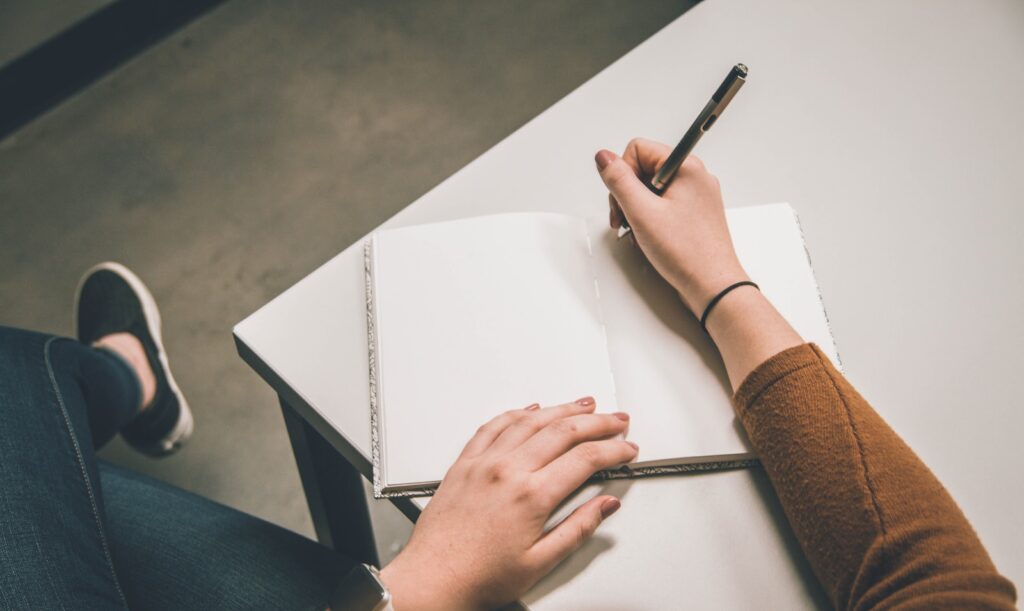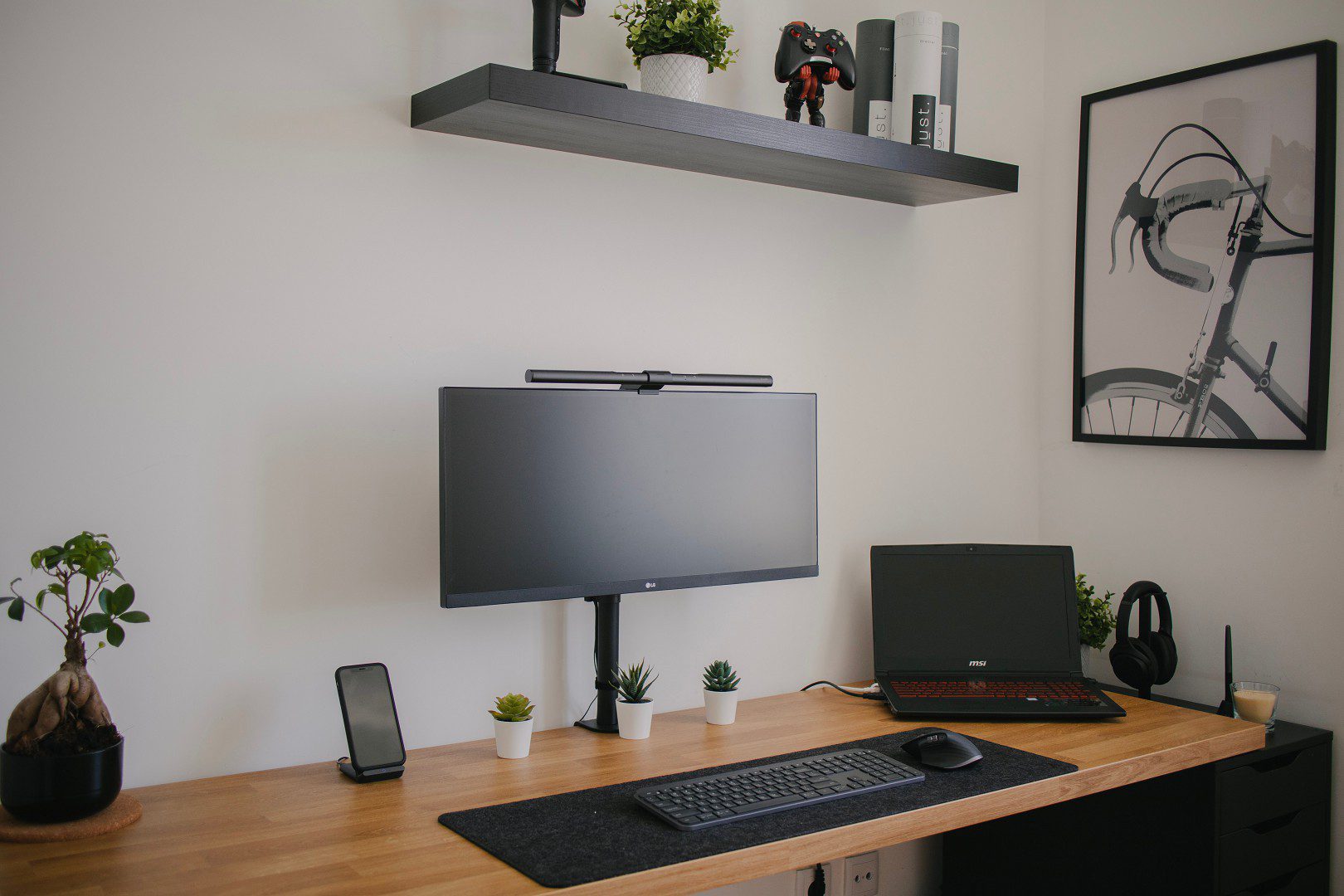Contents
- 1 Understanding Different Learning Styles: A Guide to Effective Learning Strategies
- 2 Visual Learners: Unlocking the Power of Visual Learning Strategies
- 3 Auditory Learners: Harnessing the Potential of Sound-based Learning Techniques
- 4 Kinesthetic Learners: Hands-on Approaches for Optimal Learning
- 5 Reading/Writing Learners: Strategies to Maximize Learning through Text-based Methods
- 6 The Power of Personalization: Tailoring Learning Strategies to Individual Styles
- 7 Enhancing Retention and Understanding: Proven Techniques for Different Learning Styles
- 8 Diverse Learning Styles, One Goal: Optimizing Learning Outcomes with Effective Strategies
- 9 Unlocking Your Learning Potential: Strategies for Different Learning Styles
- 10 Unlocking Your Learning Potential: Strategies for Different Learning Styles
- 11 FAQs About Learning Strategies for Different Learning Styles
Understanding Different Learning Styles: A Guide to Effective Learning Strategies
Have you ever wondered why some people excel in certain learning environments while others struggle to grasp the same concepts? The answer lies in understanding the diverse ways in which individuals process and retain information. Welcome to a comprehensive guide that will unlock the secrets to effective learning strategies tailored to different learning styles.
Learning is a lifelong journey, and each of us has a unique approach to acquiring knowledge. Some people are visual learners, who thrive when information is presented in a visual format such as charts, diagrams, or videos. Others are auditory learners, who absorb information best through sound-based techniques like lectures or discussions. There are also kinesthetic learners, who need hands-on experiences to truly grasp new concepts. And let’s not forget about reading/writing learners, who excel when information is presented in a textual format.
In this guide, we will delve into each learning style, exploring the specific strategies and techniques that can optimize learning outcomes for individuals with different preferences. We will also emphasize the power of personalization, as tailoring learning strategies to individual styles can significantly enhance retention and understanding.
Furthermore, we will provide proven techniques for enhancing retention and understanding across diverse learning styles. By understanding the strengths and weaknesses of each style, we can create a holistic approach to learning that maximizes our potential.
So, whether you’re a visual learner who loves to see concepts come to life or an auditory learner who thrives in lively discussions, this guide will equip you with the tools and techniques to boost your learning success. Get ready to unlock your learning potential and embark on a journey of growth and self-discovery.
Visual Learners: Unlocking the Power of Visual Learning Strategies
Visual learners have a strong preference for learning through visual aids, such as charts, diagrams, and images. They absorb information best when it is presented in a visual format. To effectively cater to visual learners, it is important to incorporate visual learning strategies into their study routine. Here are some effective techniques:
1. Use Visual Aids in Study Materials
Visual learners benefit greatly from incorporating visual aids into their study materials. This can include using colorful highlighters to emphasize key points in their notes, creating mind maps or flowcharts to visually organize information, or using flashcards with images to reinforce concepts. These visual cues help visual learners to better understand and retain information.
2. Watch Videos and Tutorials
Visual learners often find it easier to understand complex concepts when they are presented in a visual format. Watching educational videos and tutorials can be a great way for visual learners to grasp new information. Platforms such as YouTube and Khan Academy offer a wide range of educational videos on various subjects. Visual learners can take advantage of these resources to enhance their learning experience.
3. Utilize Diagrams and Infographics
Visual learners find it helpful to visualize information in the form of diagrams and infographics. These visual representations can simplify complex ideas and make them easier to understand. For example, when studying biology, visual learners can benefit from using diagrams to understand the structures and functions of cells or using infographics to learn about the different stages of photosynthesis. These visual tools provide a clear and concise overview of the topic, making it easier for visual learners to grasp the information.
By incorporating these visual learning strategies, visual learners can optimize their learning experience and improve their understanding and retention of information. In the next section, we will explore effective learning techniques for auditory learners, who have a preference for sound-based learning methods.

Auditory Learners: Harnessing the Potential of Sound-based Learning Techniques
As an auditory learner, you have a unique advantage when it comes to absorbing information through sound. By utilizing sound-based learning techniques, you can enhance your understanding and retention of new material. Here are some strategies that can help you make the most of your auditory learning style:
1. Lecture-based Learning
- Attend lectures or listen to recorded lectures to grasp complex concepts.
- Take notes while listening to the lecture to reinforce your understanding.
2. Discussion Groups
- Engage in group discussions where you can actively participate in conversations and bounce ideas off others.
- Verbalize your thoughts and ideas to solidify your understanding of the topic.
3. Audiobooks and Podcasts
- Utilize audiobooks and podcasts to learn new information or explore different subjects.
- Listen to educational podcasts or audiobooks while commuting or doing chores to make the most of your time.
4. Repetition and Recitation
- Repeat information out loud to reinforce your memory.
- Recite key points or summarize what you have learned to ensure comprehension.
5. Mnemonic Devices
- Create mnemonic devices, such as acronyms or rhymes, to remember important information.
- Associate new concepts with familiar sounds or melodies to aid in recall.
By incorporating these strategies into your learning routine, you can optimize your auditory learning style. Remember, everyone learns differently, and it’s essential to find the methods that work best for you. In the next section, we will explore strategies for kinesthetic learners, who thrive on hands-on approaches to learning.
Kinesthetic Learners: Hands-on Approaches for Optimal Learning
Kinesthetic learners are individuals who learn best through physical movement and hands-on experiences. They have a strong need for tactile stimulation and find it easier to understand and retain information when they can actively engage with it. If you are a kinesthetic learner or know someone who is, here are some effective learning strategies to maximize your learning potential:
1. Incorporate Movement into Learning Activities
- Take regular breaks during study sessions to stretch, walk around, or engage in physical activities like jumping jacks or yoga poses. This helps to keep your body active and your mind alert.
- Use hands-on materials such as manipulatives, models, or puzzles to enhance your understanding of complex concepts. For example, if you are learning about the human body, you can use a 3D anatomy model to explore the different organs and their functions.
2. Use Role-Playing or Simulation Activities
- Act out scenarios or play roles related to the topic you are studying. For instance, if you are learning about historical events, you can create a skit or participate in a historical reenactment to immerse yourself in the time period and better understand the context.
3. Engage in Experiential Learning
- Seek out opportunities for hands-on experiences related to your learning goals. For example, if you are studying biology, you can volunteer at a local nature center or participate in a field trip to a wildlife sanctuary to observe and interact with different species.
4. Utilize Multi-Sensory Techniques
- Combine physical movement with other sensory modalities, such as listening to music or using scented markers while studying. This helps to create a more immersive and engaging learning experience.
By incorporating these strategies into your study routine, you can optimize your learning outcomes as a kinesthetic learner. Remember, everyone has their own unique learning style, and it’s important to tailor your approach to suit your individual needs. In the next section, we will explore strategies specifically designed for reading/writing learners.

Reading/Writing Learners: Strategies to Maximize Learning through Text-based Methods
Reading and writing learners are individuals who prefer to process information through written text. They thrive on reading and writing activities and find it easier to understand and retain information when it is presented in a textual format. To maximize their learning potential, reading/writing learners can employ various strategies that cater to their preferred learning style.
1. Take Detailed Notes
- Reading/writing learners benefit greatly from taking detailed notes during lectures or while reading.
- They can organize their thoughts and ideas by summarizing key points, writing down definitions, and making connections between concepts.
- Using bullet points or creating mind maps can help them visually organize information.
2. Create Study Guides
- Creating study guides is an effective way for reading/writing learners to review and consolidate information.
- They can condense their notes into concise summaries, highlighting the most important concepts and ideas.
- Study guides can be in the form of outlines, flashcards, or concept maps.
3. Engage in Active Reading
- Reading/writing learners can enhance their understanding by actively engaging with the text.
- They can underline or highlight key points, write comments or questions in the margins, and create summaries after each section.
- Taking breaks to reflect on what they have read and discussing it with others can also deepen their comprehension.
4. Utilize Writing as a Learning Tool
- Writing assignments, such as essays or reflections, can be valuable learning opportunities for reading/writing learners.
- They can articulate their thoughts and ideas clearly, further reinforcing their understanding of the subject matter.
- Peer editing or discussing their writing with others can provide additional perspectives and insights.
By employing these strategies, reading/writing learners can optimize their learning experience and make the most out of text-based materials. The ability to take detailed notes, create study guides, engage in active reading, and utilize writing as a learning tool can greatly enhance their comprehension and retention of information.
In the next section, we will explore the power of personalization and how tailoring learning strategies to individual styles can further enhance the learning process. By understanding and applying strategies that align with their preferred learning style, individuals can unlock their full learning potential and achieve optimal learning outcomes.
The Power of Personalization: Tailoring Learning Strategies to Individual Styles
In order to optimize learning outcomes, it is crucial to tailor learning strategies to individual learning styles. Each person has a unique way of processing information and retaining knowledge, and by understanding and accommodating these differences, educators and learners can enhance the effectiveness of their learning experiences.
Identifying Learning Styles
Before diving into personalized learning strategies, it is important to identify one’s learning style. There are various models and theories that categorize learning styles, such as the VARK model (Visual, Auditory, Reading/Writing, and Kinesthetic) or the Honey and Mumford Learning Styles Questionnaire (Activist, Reflector, Theorist, and Pragmatist). By taking assessments or reflecting on personal preferences, individuals can gain insights into how they learn best.
Visual Learners
Visual learners prefer to see information presented in a visual format. They benefit from diagrams, charts, graphs, and visual aids. To cater to visual learners, educators can incorporate visual elements into their teaching materials, such as using PowerPoint presentations, videos, or infographics. Visual learners can also benefit from mind maps or concept maps, which visually organize information and help them make connections.
Auditory Learners
Auditory learners learn best through sound and verbal communication. They thrive in discussions, lectures, and audio recordings. To support auditory learners, educators can provide recorded lectures or podcasts, encourage class discussions, and use mnemonic devices or rhymes to help with memorization. Audiobooks or listening to recorded lectures can also be effective study tools for auditory learners.
Kinesthetic Learners
Kinesthetic learners prefer hands-on experiences and physical movement. They learn best through activities that involve touching, moving, and manipulating objects. To engage kinesthetic learners, educators can incorporate hands-on experiments, role-playing activities, or interactive simulations into their lessons. Kinesthetic learners can also benefit from taking breaks during study sessions to engage in physical activities like stretching or walking.
Reading/Writing Learners
Reading/writing learners excel in text-based learning environments. They prefer reading and writing activities, such as taking notes, writing essays, or reading textbooks. To support reading/writing learners, educators can provide written materials, encourage note-taking, and assign writing assignments or reflective journals. Online forums or discussion boards can also be beneficial for reading/writing learners to engage in written discussions.
By personalizing learning strategies to individual learning styles, educators and learners can create a more engaging and effective learning experience. Understanding and accommodating different learning styles can lead to improved retention, comprehension, and overall learning outcomes. In the next section, we will explore proven techniques for enhancing retention and understanding across diverse learning styles.

Enhancing Retention and Understanding: Proven Techniques for Different Learning Styles
When it comes to learning, one size does not fit all. Different individuals have different learning styles, and it is essential to tailor learning strategies to accommodate these styles for optimal retention and understanding. In this section, we will explore proven techniques that can enhance learning outcomes for various learning styles.
Visual Learners
- Utilize visual aids such as diagrams, charts, and graphs to enhance understanding.
- Incorporate videos, images, and infographics into the learning material.
- Use color-coding and highlighting to emphasize key points.
Auditory Learners
- Provide audio recordings or lectures to reinforce learning.
- Encourage discussions and group activities that involve verbal communication.
- Use mnemonic devices or acronyms to aid memory retention.
Kinesthetic Learners
- Incorporate hands-on activities and experiments to engage kinesthetic learners.
- Encourage movement and physical interaction with the learning material.
- Use manipulatives or props to facilitate learning.
Reading/Writing Learners
- Provide written materials such as textbooks, articles, and handouts.
- Encourage note-taking and summarizing information in written form.
- Utilize quizzes or writing assignments to reinforce understanding.
By employing these techniques, educators can create a learning environment that caters to the needs of different learners. This not only enhances retention and understanding but also fosters a positive learning experience.
Phrases such as “By catering to different learning styles” and “In the next section, we will explore the power of personalization” can be used to reinforce the topic and transition to the next section.
Diverse Learning Styles, One Goal: Optimizing Learning Outcomes with Effective Strategies
When it comes to learning, everyone has their own unique style. Some people are visual learners, while others prefer auditory or kinesthetic methods. However, despite these differences, the ultimate goal remains the same: to optimize learning outcomes. In this section, we will explore effective strategies that can be used to cater to diverse learning styles and achieve this common objective.
1. Understanding the Different Learning Styles
Before we delve into specific strategies, it is important to have a clear understanding of the different learning styles. Visual learners, for instance, learn best through visual aids such as diagrams, charts, and videos. Auditory learners, on the other hand, absorb information more effectively through listening and discussing concepts. Kinesthetic learners thrive in hands-on activities and prefer to learn by doing. Reading/writing learners, as the name suggests, prefer text-based materials and enjoy taking notes and writing summaries.
2. Tailoring Strategies to Individual Styles
To optimize learning outcomes, it is crucial to tailor strategies to individual learning styles. For visual learners, incorporating visual aids such as infographics and mind maps can greatly enhance comprehension and retention. Auditory learners can benefit from techniques such as recording lectures or participating in group discussions. Kinesthetic learners can engage in activities like role-playing or conducting experiments to reinforce their understanding. Reading/writing learners can make use of textbooks, online articles, and note-taking to maximize their learning potential.
3. Combining Strategies for Maximum Effect
While it is important to cater to individual learning styles, it is also beneficial to incorporate a combination of strategies to promote a holistic learning experience. For example, a visual learner can enhance their understanding by discussing concepts with an auditory learner, while a kinesthetic learner can reinforce their knowledge by summarizing their findings in writing.
By understanding and implementing effective strategies for different learning styles, we can optimize learning outcomes and ensure that each individual is able to reach their full potential. In the next section, we will explore how to unlock our learning potential by utilizing these strategies effectively.

Unlocking Your Learning Potential: Strategies for Different Learning Styles
When it comes to learning, one size does not fit all. Each individual has their own unique learning style, and understanding and embracing this can greatly enhance the learning experience. In this section, we will explore various strategies that can help unlock your learning potential based on different learning styles.
1. Visual Learners
Visual learners process information best through visual aids such as charts, diagrams, and images. To optimize your learning experience as a visual learner, try the following strategies:
- Use color-coded notes or highlighters to organize and categorize information.
- Utilize mind maps or flowcharts to visually represent concepts and their connections.
- Watch educational videos or use online tutorials that provide visual explanations.
2. Auditory Learners
Auditory learners absorb information best through sound and spoken words. To harness the potential of sound-based learning techniques, consider the following strategies:
- Record lectures or study materials and listen to them repeatedly.
- Engage in group discussions or participate in study groups to verbally process information.
- Utilize audiobooks or podcasts to reinforce learning.
3. Kinesthetic Learners
Kinesthetic learners learn best through hands-on experiences and physical activities. To optimize your learning experience as a kinesthetic learner, try the following strategies:
- Engage in activities that involve movement, such as role-playing or experiments.
- Use manipulatives or tactile objects to reinforce learning.
- Take breaks during study sessions to incorporate physical movement or exercise.
4. Reading/Writing Learners
Reading/writing learners prefer text-based methods for learning. To maximize your learning experience as a reading/writing learner, consider the following strategies:
- Take detailed and organized notes while studying.
- Rewrite and summarize information in your own words.
- Create flashcards or practice quizzes to reinforce learning through written exercises.
By tailoring your learning strategies to your individual learning style, you can unlock your full learning potential. Remember, everyone is unique, and what works for one person may not work for another. Stay open-minded and experiment with different techniques until you find what resonates with you. In the next section, we will delve into proven techniques for enhancing retention and understanding across different learning styles.
Unlocking Your Learning Potential: Strategies for Different Learning Styles
Congratulations! You have reached the end of our comprehensive guide on learning strategies for different learning styles. By now, you should have a better understanding of the various ways individuals process information and how to tailor your learning approach to maximize your potential. Remember, everyone has a unique learning style, and finding the strategies that work best for you is key to achieving optimal learning outcomes.
Embrace Personalization
One of the most important takeaways from this guide is the power of personalization. Recognize that your learning style may differ from others, and that’s perfectly okay. Embrace your unique style and use it to your advantage.
Maximize Visual Learning
If you are a visual learner, make sure to incorporate visual aids into your study routine. Utilize diagrams, charts, and graphs to help you visualize concepts and make connections between ideas.
Harness the Power of Sound
For auditory learners, consider recording lectures or reading aloud to yourself. Engaging your sense of hearing can help you absorb information more effectively.
Get Hands-On
Kinesthetic learners thrive when they can engage their bodies and senses. Incorporate hands-on activities, such as experiments, role-playing, or using manipulatives, to enhance your understanding and retention of new material.
Dive into Text-based Learning
If you are a reading/writing learner, take advantage of note-taking, summarizing, and rewriting information in your own words. These activities can help solidify your understanding and improve your retention.
Reflect and Review
Regardless of your learning style, regular reflection and review are essential. Take the time to review your notes, summarize key concepts, and reflect on what you have learned. This will reinforce your knowledge and help you retain information in the long term.
In conclusion, understanding and embracing your unique learning style is the key to unlocking your full learning potential. By tailoring your study strategies to your individual needs, you can optimize your learning outcomes and achieve success. Remember to experiment with different techniques, be open to trying new approaches, and most importantly, enjoy the journey of learning.
FAQs About Learning Strategies for Different Learning Styles
Can I use the same learning strategies for different learning styles?
While there may be some overlap, it is generally more effective to tailor your learning strategies to match your specific learning style. By understanding your preferred style, you can focus on techniques that align with your strengths and optimize your learning outcomes.
What are some effective learning strategies for visual learners?
Visual learners can benefit from using mind maps, diagrams, and charts to organize information. Additionally, incorporating visual aids such as videos, images, and color-coded notes can enhance their understanding and retention of material.
How can auditory learners make the most out of their learning style?
Auditory learners can leverage their strength by actively engaging in discussions, participating in group activities, and using techniques like verbal repetition and recording lectures. Listening to podcasts, audiobooks, and lectures can also enhance their learning experience.
What are some tips for kinesthetic learners to enhance their learning?
Kinesthetic learners thrive through hands-on experiences, so incorporating physical activities and interactive exercises can be beneficial. Taking breaks to move around, using manipulatives, and participating in role plays or simulations can help kinesthetic learners fully grasp and retain information.

0 Comments